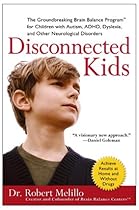
Nothing is quite as unnerving to a homeschooling mom as finding out that her child is struggling in school. I know, because I’ve been there! I have several children that struggle in reading, spelling, handwriting, and math — and it can be scary! In addition, my youngest child (not quite two as I’m writing this) has some significant developmental delays because of health problems, so I’m guessing I’ll be facing learning challenges for many years to come.
An email I received this week says it well,
“I’m struggling with what to do in teaching my son to write. He is 8 and excels in all other subjects. However, writing often brings tears! He feels overwhelmed. He is also behind in this subject, so I’m not sure if I should keep up with what we are doing and encourage him more or if we should look at doing something different. It’s always finding that balance and knowing, ‘Is he being stubborn or am I being stubborn in my approach?'”
Another mom wrote,
“I have a 13 year old son who is just now catching on to reading. It has taken several curriculum changes and tearful days to get him to learn to read. He is still not reading well though, and is falling ‘behind’. He cannot seem to understand how to write things out. For example, I will ask him to dictate a sentence, and he will not remember how to write simple one/two vowel words. He is always asking me how to spell even the simplest words. I am not sure what to do anymore… He should be in 7th grade, but is now doing 3rd grade stuff. Any wisdom for me? I am so worried about this issue! I feel like I’m failing my son.”
I myself have felt the same way. Many of you have written to me, so I want to help, but honestly, my strong point is research. Over the last year and a half (since we found out about our youngest son’s troubles), I have been reading and researching heavily — and finding out that some of my older children also have mild learning problems that I had never even considered. (One friend put it well when she said, “All humans have brain damage. It’s just the extent of damage that differs!”)
So what should you do when you begin to notice a child is making downward progress in school or is suddenly falling behind in math? Well, for me, I have been caught off guard. At first, I would deny that a problem existed, but since our state requires achievement testing, the yearly report would hit me with the bald truth.
Why is this happening?
My research has shown that there are two reasons for learning problems:
- Basic information was never learned well. This is a gap in knowledge.
- The two sides of the brain (the right and left hemispheres) aren’t communicating with each other properly. This is a gap in ability.
Fun Fact: Did you know that the processes that allow a child to think, move, express emotion, and interact socially reside in either the right or the left hemisphere of the brain? In other living species, brain centers are stored on both sides. Asymmetry is what makes humans unique from all other creatures, and it’s what makes the human brain so powerful. We are truly made in the image of God! (Source)
It seems to me that learning problems begin to show up when simple school tasks start becoming more complex. For instance, most children can figure out that 2 + 2 = 4, but when a word problem or arithmetic problem involves multiple steps, suddenly a learning problem can become obvious. Another common problem is in writing, as my friends above have discovered. Handwriting or spelling might be easy, but taking all that a child has learned about communication and combining it all into a few sentences — that can be overwhelming for a child with a learning problem!
Achievement tests are controversial, but I personally appreciate getting the results because the test typically breaks learning down into its core components, helping me easily identify where a problem is. For instance, after an achievement test, I discovered that one daughter wasn’t hearing the ending sounds of letters. I knew she was struggling with reading, but I didn’t know why. We took her to an audiologist to get her hearing tested, but we were baffled to find out that her hearing was perfect. After further research, I found out that these types of hearing problems (which commonly show up in an inability to read or spell) can be caused by a weakness in the right side of the brain. We are now doing specific “brain exercises” for that area of her brain, and in a short time, we’ve already seen a marked improvement.
One of the books I purchased is Disconnected Kids, by Dr. Robert Melillo. In chapter 10, he has an extended list of common academic problems and which side of the brain they are associated with.
How do we fix the problem?
First, we need to be sure that we’ve tried to discover what caused the problem in the first place — so we can be sure the problem isn’t still there and can cause future problems! For instance, if the child simply has a gap in knowledge, why did this happen? (Maybe you had a baby the year that you “taught” long division, so the child never understood the steps involved.) If the child has a gap in ability, was it because you had a rough pregnancy, or maybe pitocin was used in labor, or maybe the child was born by c-section, or maybe he had a nutritional deficiency in infancy? Problems such as these often show up in a child with delayed developmental milestones, like my youngest, or in a child who skipped crawling or talked late (such as two of my other children). Again, the book Disconnected Kids has several chapters to help you discover the cause of the problem.
Next we need to identify the specific problems. If the gaps are in knowledge, an achievement test or comparison with a list of common skills can help. If the gaps are in ability, use a book such as Disconnected Kids to pinpoint which parts of the brain (right or left hemisphere) have been affected. Severe problems (such as cerebral palsy, autism, and asperger’s syndrome) and milder disorders (such as ADHD, dyslexia, and sensory processing disorder) are all types of neurological disorders, evidences of a brain injury.
Now we need to teach the brain how to communicate with both sides properly. There are three ways we can do this, and they should all be worked on simultaneously if they are going to be effective.
1. Sensory Motor
You can teach the brain to communicate properly by doing “cross-pattern exercises.” As author Ruth Beechick writes, therapists and specialists often charge a high hourly rate for the very same exercises you can do at home. She recommends cross-pattern crawling, cross-pattern walking, and other cross-pattern activities in her book, A Biblical Home Education. You can see examples of these on YouTube. An excellent article on the benefits of cross-pattern creeping can be read here.
Your child also needs a good supply of oxygen to his brain and muscles. You can increase the oxygen in his blood by encouraging daily, aerobic exercise that will also strengthen muscles. Sit-ups, push-ups, jumping, mini-trampolines, jump ropes, running, playing on a jungle gym, and jumping jacks are all good examples of common-sense ways to do this. (My P.E. curriculum provides lots of daily ideas, already scheduled for you.) Children need 30-60 minutes of “play” of this type six days a week!
You also need to stimulate the five senses. Stimulate the eyes (teach them to go “cross-eyed,” for instance, because it’s fun and good for them). Stimulate smelling, hearing, and touch — for a few minutes every day. Simple curriculum that teaches the five senses often has lots of fun ways to stimulate the five senses, and it’s useful for children of all ages. You can check out this YouTube for just one example of how to stimulate the eyes.
Finally, don’t forget about the power of music. Listening to music has been proven as an effective way to stimulate the brain. Disconnected Kids has a list of music that can be listened to, for instance, with just one ear with the help of earphones, to stimulate certain areas of the brain. Schedule a time for listening to good music every day!
Fun Fact: Did you know that television, video games, and even computer “learning” games can make brain injuries worse? This is because they over-stimulate certain sections of the brain and under-stimulate other sections. As much as kids love them, it makes you wonder if our plugged-in society is one of the reasons why so many children have learning problems compared to just fifteen years ago.
2. Nutrition
Nutrition is essential because it supplies oxygen to the brain and nutrients that build up neurons, repair cells, and speed up brain communication. This is a big subject, but my health website and books such as the Gut and Psychology Syndrome share a lot of excellent information on how to use nutrition to improve learning disabilities.
I have also found that essential oils, such as sandalwood, cedarwood, melissa, frankincense, blue cypress, lavender, and helichrysum, when applied to the bottoms of the feet or the temples, help to increase oxygen and mental clarity. Remnant Remedy sells these oils in a blend called “Brainstorm.”
3. Academic
Even if you improve your child’s brain ability, you will not have filled his knowledge gaps. It is common to hear, among homeschoolers and school teachers alike, that if a child is weak in an area, we should overlook it and concentrate on his strengths instead. I strongly disagree! Scientists have found that when we concentrate on a child’s weak areas, he will improve in those ways and his strengths will also improve. Basically, we are teaching his brain to communicate properly, which helps his weaknesses get better and his strengths get better, too.
Rather than apologizing for your child and hoping that he will get along in life without essential skills (such as reading, handwriting, or spelling), spend time each day on his weak areas, systematically helping him improve.
First, reteach. Diagnose his weak areas, then go back and teach those things properly. Don’t let your pride get in the way. If your son is in algebra and you discover that he really doesn’t understand fractions, that’s okay. Spend a few weeks on fractions until he finally gets it. Admitting weakness doesn’t make you a bad mother or teacher. However, ignoring it and pretending it doesn’t exist might.
Second, drill. Just because your child understands it doesn’t mean he can use it easily. Does he understand why 2 x 4 = 8? Okay, can he access his multiplication facts quickly? One sign of a learning disability is that a child’s brain neurons aren’t communicating quickly enough. You can help by drilling him on academic facts until his brain increases its speed. Drill and testing really aren’t the bad guys they’re made out to be!
Okay, so let’s review and give you an action plan.
- Test and note areas of weakness. You can do this formally or informally, but you should write things down so you can look back on your notes later.
- Using the areas I mentioned above, make a plan. How are you going to work with your child daily, six days a week, consistently? Write it all down.
- Just do it. In our home, I need a chart that I can put checkmarks on, or I’ll never get it done. (Yes, I was one of those children that loved stickers and smiley faces. Still do…)
- Every 3-6 months, retest again. Are you seeing improvement? What needs to be changed about your plan? Do you need to read more, or get help from a professional? Is the problem completely gone? (Rejoice!)
Taking careful notes will reassure you and others (such as your husband or grandparents or friends) that you really are making progress. It will keep you from getting discouraged on those cloudy days. It will help you prove that your “program” really works.
Okay, your turn! I’m really not the expert here. What advice, books, links, and help can you share?
![]()



Thanks Anne!
Pefect timing! We just got a diagnosis of PDD for one of our kiddos.
We have two kids with developmental disorders. Our 10 year old son has Auditory Processing Disorder. We have used a lot of Dianne Craft’s curriculum for him. It isn’t “magical” but certainly improved his creative writing, reading, spelling and math. She teaches a lot of the brain re-patterning, as mentioned above, and we were faithful for over 10 months with that. He still struggles with reading comprehension, and writing is a chore. Dianne Craft taught us how to help with the letter formation struggles between the left and right brain. When the diagnoses from a major Children’s Hospital told us he would never be on grade level, we were thrilled that recent testing for the first time with standardized testing, showed that he was overall ahead of his peers. Homeschooling has allowed us to work on his weaknesses and taught him to truly excel at his strengths. Our son amazes us with his visual skills. His expressive language is quite a struggle, yet we have given him tools to make home school fun for him……..he never dreads it!
http://www.diannecraft.org
Hello,
I really enjoy reading your blog and appreciate the research you do. However, I came accross this article and was wondering what you thought of such a criticism of Melillo’s theoris : http://www.sciencebasedmedicine.org/index.php/brain-balance/
Well, I have to be honest, Rebecca. I’m not a big fan of Quackwatch and the “service” they provide. If you take the criticism here at face value, only looking at Dr. Melillo’s website, then I suppose it would make sense. His book, however, addresses all these points, and gives a lot of the scientific reasoning behind what they do. It doesn’t sound as if this website’s author has read Dr. Melillo’s book. The book also talks about the thousands of children they have helped, which is the support behind his clinical evidence. He does sell his service, but his book provides help to parents that can’t afford it, which is one of the reasons he says he wrote the book. I think he is certainly entitled to charge for a book or, for those who want it, individualized services, since he needs to support himself. I think groups like Quackwatch often forget that even doctors need to pay their bills. Finally, just because he is a chiropractor or uses the words “holistic” or “without drugs” doesn’t make him suspicious to me or “pseudo-science.”
I have been impressed with him, but I also realize we live in a sin-scarred world where not every health problem can be fixed. However, I have to wonder what alternative or hope this website is prepared to give to parents.
Another thing to look out for under nutrition is making sure your child is well hydrated. I have noticed some days where I, and my kids, seem a bit more “foggy” if we have not had as much water as we should. I know it is not a cure, but it does affect preexisting learning problems.
I have just returned from a (rather pricey) seminar called the Anat Beniel Method. I “wakes up ” the brain for the child and the learning possibilities are incredible.! I may be saying this wrong, bu it is worth looking into